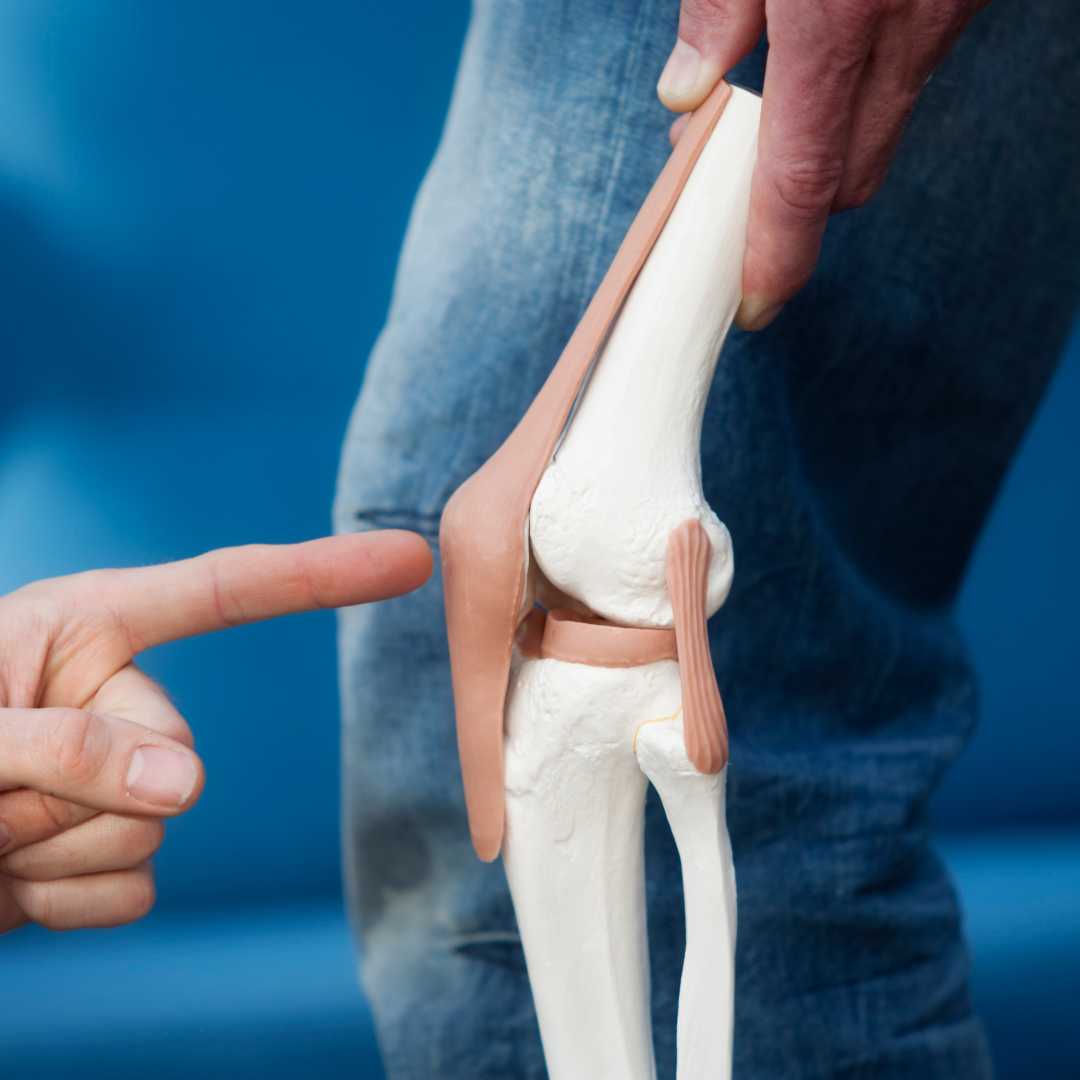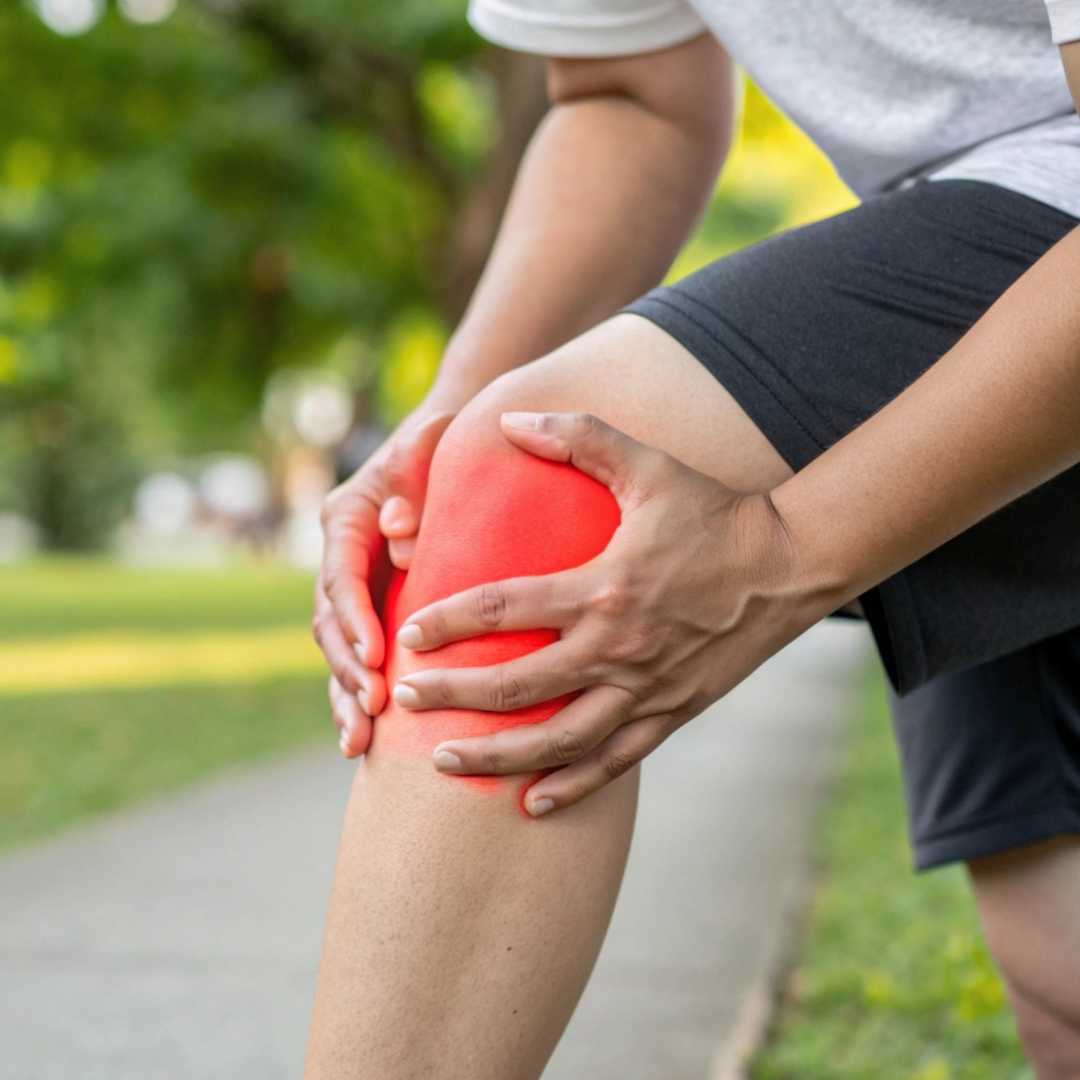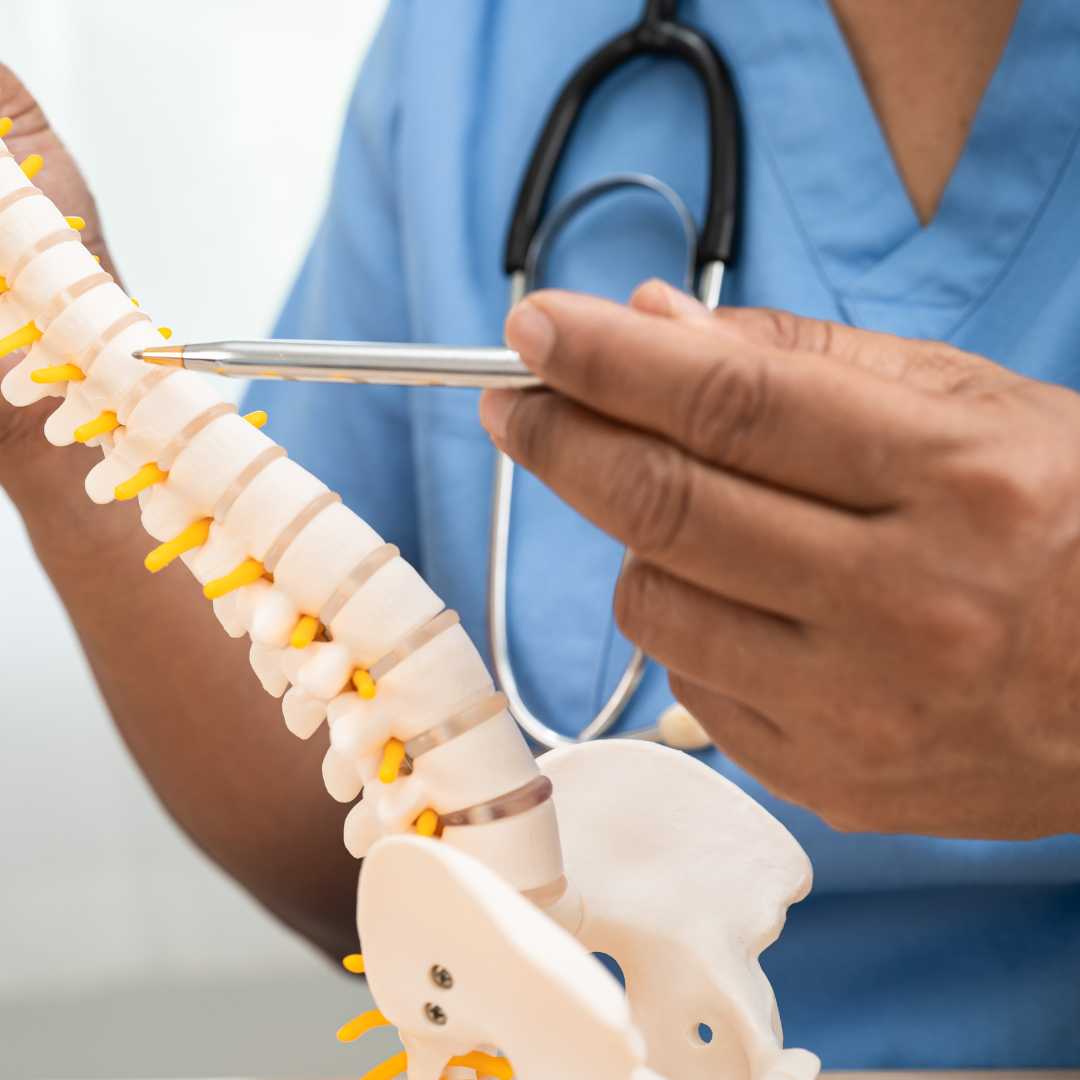
Regain Your Stride - Exploring Orthopedic Surgeries Abroad
If you're experiencing persistent pain, stiffness, or limited mobility, you're not alone. Millions of people worldwide face challenges with their bones, joints, and muscles, often finding that daily activities become a struggle. Orthopedic surgeries offer a pathway to relief and renewed function, addressing a wide range of conditions from sports injuries to degenerative diseases like arthritis.
But what if the cost or wait times for these essential procedures are prohibitive in your home country? This is where medical tourism for orthopedic surgeries shines. It opens up a world of possibilities, connecting you with top-tier hospitals and experienced surgeons in international destinations known for excellent healthcare at a more accessible price point. Imagine getting the care you need, potentially saving thousands, and even enjoying a healing environment away from the stresses of home.
From common procedures like knee and hip replacements to specialized spine or arthroscopic surgeries, the global medical landscape offers a wealth of options. Understanding the process, the benefits, and what to expect is the first step towards taking control of your musculoskeletal health. Let's explore how medical tourism can make life-changing orthopedic surgery a reality for you.
What Types of Orthopedic Surgeries Are Available?
Orthopedic surgery is a broad field, covering treatments for nearly every part of the body's support structure. The type of surgery recommended depends heavily on your specific condition, its severity, and your overall health. Understanding the most common categories can help you identify potential treatments.
Here are some of the frequently performed orthopedic surgeries:
- Joint Replacement (Arthroplasty): This is one of the most well-known orthopedic procedures. It involves removing a damaged joint and replacing it with an artificial implant (prosthesis).
- Knee Replacement: Often performed for severe arthritis, relieving pain and improving mobility.
- Hip Replacement: Treats severe hip pain and damage, commonly due to osteoarthritis.
- Shoulder Replacement: Less common than knee or hip, but effective for severe shoulder arthritis or injury.
- Arthroscopy: A minimally invasive procedure where a small incision is made, and a tiny camera (arthroscope) is inserted to diagnose and treat joint problems. It's often used for:
- Knee Arthroscopy: To repair meniscus tears, ACL reconstruction, or remove loose bodies.
- Shoulder Arthroscopy: For rotator cuff repair, labral tears, or impingement syndrome.
- Spine Surgery: Addresses issues with the back and neck, ranging from herniated discs to spinal deformities.
- Spinal Fusion: Joins two or more vertebrae to stabilize the spine and relieve pain.
- Laminectomy/Discectomy: Removes part of a herniated disc or bone to relieve pressure on nerves.
- Vertebroplasty/Kyphoplasty: Treats compression fractures in the spine.
- Fracture Repair: Techniques to stabilize broken bones, often using plates, screws, rods, or pins (internal fixation) to help them heal correctly.
- Soft Tissue Repair: Procedures to mend torn ligaments (like ACL reconstruction), tendons (rotator cuff repair), or muscles.
- Deformity Correction: Surgeries to correct congenital or acquired deformities, such as bunionectomy for bunions or osteotomy for bone realignment.
Each type of surgery has specific indications, recovery periods, and potential outcomes, all of which your surgeon will discuss in detail during your consultation.
Common Symptoms Requiring Orthopedic Surgery
Recognizing the signs that might point to a need for orthopedic intervention is crucial. While many musculoskeletal issues can be managed with non-surgical methods like physical therapy, medication, or injections, some persistent or severe symptoms suggest that surgery might be the most effective path to recovery.
Here are common indicators:
- Chronic, Unrelenting Pain: Pain that lasts for several months, severely impacts daily life, and doesn't improve with rest, medication, or other conservative treatments.
- Severe Stiffness or Limited Range of Motion: Inability to move a joint through its full normal range, making simple tasks like walking, reaching, or bending difficult.
- Visible Deformity or Swelling: Noticeable changes in the shape of a joint or limb, or persistent swelling that indicates inflammation or fluid buildup.
- Joint Instability: A feeling that a joint "gives way" or is unstable, particularly common in knees or shoulders after ligament injuries.
- Loss of Function: Significant weakness, numbness, tingling, or inability to perform daily activities due to an orthopedic condition.
- Night Pain: Pain that wakes you up from sleep or prevents you from getting comfortable, often a sign of significant joint damage.
If you experience any of these symptoms, it's essential to consult with a medical professional. An orthopedic specialist can perform diagnostic tests, such as X-rays, MRI scans, or CT scans, to accurately determine the cause of your discomfort and recommend the appropriate course of action.
Who Is a Candidate for Orthopedic Surgery?
Determining if you are a suitable candidate for orthopedic surgery involves a thorough evaluation by an orthopedic surgeon. This assessment considers various factors to ensure that the potential benefits of surgery outweigh the risks, and that you are likely to achieve a good outcome. Generally, candidates share several key characteristics:
- Failure of Conservative Treatments: You have tried non-surgical options like physical therapy, pain medication, injections, or lifestyle modifications for an extended period, and your symptoms have not significantly improved.
- Significant Pain and Functional Impairment: Your orthopedic condition causes severe pain that disrupts your daily life, work, and sleep, and significantly limits your ability to perform routine activities.
- Specific Diagnosable Condition: Imaging tests (X-rays, MRI, CT scans) and physical examinations clearly show a structural problem (e.g., severe arthritis, significant tear, fracture) that can be surgically corrected.
- Overall Good Health: You are generally healthy enough to undergo anesthesia and recover from surgery. Your doctor will assess any existing medical conditions (like heart disease, diabetes) and discuss how they might impact the procedure or recovery.
- Realistic Expectations: You understand the potential outcomes, risks, and recovery timeline associated with the surgery.
- Commitment to Rehabilitation: You are willing and able to participate actively in post-operative physical therapy and follow all recovery instructions.
Age is generally not the sole determining factor; rather, it's your physiological health and activity level that matter most. For example, a healthy 70-year-old might be a better candidate for a joint replacement than a less healthy 50-year-old with multiple comorbidities.
How Do I Prepare for Orthopedic Surgery?
Proper preparation is key to a smooth surgery and successful recovery. Your medical team will provide detailed instructions, but here's a general overview of what you can expect:
Pre-Operative Medical Evaluation:
- Medical History and Physical Exam: Your surgeon and anesthesiologist will review your complete medical history, including any chronic conditions, allergies, and previous surgeries.
- Diagnostic Tests: You may undergo blood tests, an electrocardiogram (ECG), and chest X-rays to ensure you are fit for surgery and anesthesia.
- Medication Review: Discuss all medications, supplements, and herbal remedies you are taking. You may need to stop certain medications, like blood thinners, several days or weeks before surgery.
Lifestyle Adjustments:
- Stop Smoking: Smoking significantly impairs healing and increases complication risks. Your doctor will advise you to stop weeks before surgery.
- Healthy Diet and Exercise: Eating nutritious foods and maintaining a moderate activity level (if your condition allows) can help strengthen your body for recovery.
- Weight Management: If overweight, losing even a small amount can reduce stress on joints and improve surgical outcomes.
Logistical and Home Preparation:
- Arrange for Support: Plan for help with daily tasks during your initial recovery, especially if you live alone.
- Prepare Your Home: Make your living space safe and accessible. This might include moving furniture, securing loose rugs, and ensuring essential items are within easy reach. Consider assistive devices like crutches or walkers.
- Pack Your Bag: For your hospital stay, pack comfortable clothing, toiletries, and any personal items that bring comfort.
- Fast Before Surgery: You will be instructed not to eat or drink anything for several hours before your surgery, typically after midnight the night before.
Following these guidelines diligently will help minimize risks and optimize your recovery process, whether you're having surgery at home or abroad.
What to Expect During Recovery from Orthopedic Surgery?
The journey to recovery after orthopedic surgery is a critical phase that requires patience, dedication, and adherence to your medical team's instructions. While specifics vary greatly depending on the type of surgery, here's a general outline of what to expect:
Immediate Post-Operative Period (Hospital Stay):
- Pain Management: You will receive medication to manage post-surgical pain, which is normal and expected. The goal is to keep you comfortable enough to participate in early mobilization.
- Early Mobilization: For most orthopedic surgeries, especially joint replacements, movement begins very soon after the procedure. Physical therapists will help you get out of bed and start gentle exercises.
- Monitoring: Nurses will closely monitor your vital signs, wound site, and any potential complications like blood clots.
- Length of Stay: This can range from a few hours for minor arthroscopy to several days for major joint replacements or spine surgeries.
Weeks to Months Post-Surgery (Rehabilitation):
- Physical Therapy: This is arguably the most vital component of your recovery. A tailored exercise program will help you regain strength, flexibility, and range of motion. Consistency is key.
- Wound Care: You'll receive instructions on how to care for your incision site to prevent infection.
- Activity Restrictions: You'll have specific limitations on weight-bearing, lifting, bending, or twisting, which will gradually be eased over time.
- Gradual Return to Activities: Slowly, you'll be able to resume daily activities, then work, and eventually recreational or sports activities, as advised by your surgeon and physical therapist. Full recovery can take anywhere from a few months to a year or more.
Remember that recovery is not a straight line; there will be good days and challenging days. Staying positive, following your rehabilitation plan, and communicating openly with your medical team are the best ways to ensure a successful outcome.
What Risks Are Associated with Orthopedic Surgery?
While orthopedic surgeries are generally safe and highly effective, it’s important to be aware of the potential risks and complications, as with any medical procedure. Your surgical team will take extensive precautions to minimize these, but understanding them helps you make informed decisions and know what to watch for during recovery.
Common risks associated with orthopedic surgery include:
- Infection: Any surgical incision carries a risk of infection, either at the surface or deeper within the surgical site. Antibiotics are routinely given to prevent this.
- Blood Clots (Deep Vein Thrombosis - DVT): These can form in the leg veins, and in rare cases, can travel to the lungs (pulmonary embolism), which is life-threatening. Measures like blood thinners, compression stockings, and early mobilization help prevent DVTs.
- Nerve or Blood Vessel Damage: Although rare, nerves or blood vessels near the surgical site can be injured during the procedure, potentially leading to numbness, weakness, or circulatory problems.
- Anesthesia Complications: Risks associated with general anesthesia can include nausea, vomiting, allergic reactions, or more serious respiratory or cardiac issues.
- Bleeding: Some blood loss during surgery is normal, but excessive bleeding can occur, sometimes requiring transfusions.
- Scarring: All surgeries result in some degree of scarring.
- Pain: While surgery aims to relieve pain, some post-operative pain is expected and managed with medication. Chronic pain, though rare, can sometimes persist.
- Implant-Specific Risks (for joint replacements):
- Loosening or Wear: Artificial joints can wear out or loosen over time, potentially requiring revision surgery.
- Dislocation: The ball of a joint replacement can sometimes come out of its socket.
- Periprosthetic Fracture: A fracture around the implant can occur.
- Failure to Heal or Non-Union (for fracture repair): In some cases, bones may not heal properly or ligaments/tendons may not reattach as expected.
Your surgeon will discuss these risks in detail, tailored to your specific procedure and personal health profile, ensuring you have a clear understanding before proceeding.
Why Choose Medical Tourism for Orthopedic Surgery?
For many individuals facing the need for orthopedic surgery, medical tourism has become an increasingly attractive option. It's not just about affordability; it’s about accessing high-quality care that might otherwise be out of reach. Here are the compelling reasons why patients choose to travel abroad for their orthopedic needs:
- Significant Cost Savings: This is often the primary driver. Procedures like knee or hip replacements can cost tens of thousands in Western countries. In destinations popular for medical tourism, the exact same surgery, with comparable quality, can be performed at a fraction of the price – sometimes saving 50% or more.
- Reduced Wait Times: In many public healthcare systems, waiting lists for elective orthopedic surgeries can be prohibitively long, causing prolonged pain and disability. Medical tourism offers immediate access to treatment, allowing patients to get the care they need much faster.
- Access to Specialized Expertise and Advanced Facilities: Many international hospitals specialize in orthopedic care, boasting state-of-the-art technology, modern operating rooms, and surgeons with extensive experience in specific complex procedures.
- High Quality of Care: The perception that overseas care is inferior is often a misconception. Many medical tourism destinations have internationally accredited hospitals (e.g., JCI accreditation) and highly trained, often Western-educated, medical professionals who adhere to stringent global standards.
- Opportunity for a "Healing Vacation": Combining treatment with travel allows patients to recover in a serene, often picturesque environment. The change of scenery and focus on well-being can contribute positively to the healing process.
- Privacy and Confidentiality: Some patients prefer the anonymity and privacy that medical travel offers, especially for personal medical procedures.
By choosing medical tourism, patients can make pragmatic choices for their health, ensuring they receive timely, expert care without the financial burden often associated with orthopedic procedures in their home countries.
Which Countries Are Best for Orthopedic Medical Tourism?
When considering orthopedic surgery abroad, certain countries consistently rank high due to their combination of quality, affordability, and patient-friendly services. These destinations have invested heavily in their healthcare infrastructure to attract international patients, making them excellent choices for medical tourists.
Top destinations for orthopedic medical tourism include:
- India: Renowned for its highly skilled, English-speaking orthopedic surgeons, many trained in Western countries. India offers world-class hospitals with advanced technology and exceptionally competitive prices for joint replacements and spine surgeries. The country's strong hospitality sector also aids patient comfort.
- Turkey: Positioned as a bridge between Europe and Asia, Turkey boasts modern, JCI-accredited hospitals and experienced specialists, particularly in knee and hip replacements, and spine procedures. It provides excellent value, often with package deals that include accommodation and transfers.
- Mexico: Especially popular with patients from the United States and Canada due to its proximity. Mexico offers high-quality orthopedic care, particularly in border cities and major hubs, at a significantly lower cost. Many Mexican orthopedic surgeons are U.S.-board certified.
- Thailand: Known for its luxurious private hospitals, attentive patient care, and a strong focus on medical tourism. Thailand offers high-quality orthopedic procedures, often combined with a relaxing recovery in a beautiful holiday destination.
- South Korea: A leader in medical technology and research, South Korea offers highly advanced orthopedic treatments, especially in spine surgery and complex joint reconstructions. It's known for precision and innovation, though costs might be slightly higher than in India or Turkey but still considerably less than in the West.
Other notable mentions include Poland, the Czech Republic, and Hungary for European patients seeking affordable options, and Costa Rica for those in the Americas seeking a tropical recovery environment. When choosing a destination, always look for international accreditations, surgeon credentials, and patient reviews.
What are the Costs of Orthopedic Surgery Abroad vs. Home?
The cost difference between orthopedic surgery at home and abroad is a major driving force behind medical tourism. These disparities stem from various factors, including differences in labor costs, malpractice insurance, administrative overheads, and the general economic structure of a country's healthcare system. Patients can often achieve substantial savings without compromising on quality.
Below is a comparative table illustrating estimated costs for common orthopedic surgeries in selected countries. Please note these are approximate figures and can vary based on the specific hospital, surgeon's fees, implant types, and individual patient needs.
| Procedure | USA / Canada (Estimated) | India (Estimated) | Turkey (Estimated) | Mexico (Estimated) | Thailand (Estimated) |
|---|---|---|---|---|---|
| Knee Replacement (Total) | $35,000 - $60,000 | $7,000 - $12,000 | $9,000 - $15,000 | $12,000 - $18,000 | $10,000 - $16,000 |
| Hip Replacement (Total) | $30,000 - $55,000 | $7,500 - $12,500 | $9,500 - $16,000 | $13,000 - $19,000 | $11,000 - $17,000 |
| Spinal Fusion (Single Level) | $50,000 - $100,000+ | $8,000 - $15,000 | $10,000 - $18,000 | $15,000 - $25,000 | $13,000 - $20,000 |
| ACL Reconstruction (Knee) | $20,000 - $35,000 | $4,000 - $7,000 | $5,000 - $9,000 | $6,000 - $10,000 | $5,500 - $8,500 |
| Rotator Cuff Repair (Shoulder) | $20,000 - $40,000 | $4,500 - $8,000 | $5,500 - $10,000 | $7,000 - $12,000 | $6,000 - $9,500 |
*These are estimated costs for the surgical procedure only and may not include pre-operative consultations, post-operative physical therapy, flights, or accommodation. Prices are subject to change.
The savings are significant, often allowing patients to cover travel and accommodation costs and still spend less than they would for the procedure alone in their home country. This financial advantage, combined with high-quality care, makes medical tourism an increasingly viable solution.
Is Orthopedic Surgery Abroad Safe and Reliable?
The question of safety and reliability is paramount for anyone considering medical treatment abroad. The good news is that many international medical tourism destinations offer exceptionally safe and reliable orthopedic surgery options, often on par with or exceeding standards in Western countries. However, due to the nature of international travel, proper due diligence is essential.
Factors contributing to safety and reliability abroad:
- International Accreditation: Look for hospitals with international accreditations like Joint Commission International (JCI). This accreditation signifies that the facility meets rigorous global standards for patient care, safety, and quality.
- Surgeon Qualifications and Experience: Many orthopedic surgeons in medical tourism hubs are Western-trained, board-certified, and possess extensive experience. Researching their credentials, specialties, and patient testimonials is crucial.
- State-of-the-Art Facilities: Leading international hospitals often feature cutting-edge technology, modern operating rooms, and advanced diagnostic equipment.
- Strict Protocols: Reputable hospitals abroad follow strict infection control protocols, patient safety checklists, and quality assurance measures to minimize risks.
- Dedicated International Patient Departments: Many hospitals have specialized departments to assist medical tourists, including language services, visa support, accommodation arrangements, and post-operative follow-up.
To ensure a safe and reliable experience, it is vital to:
- Thoroughly Research: Use reputable medical tourism facilitators like PlacidWay to find accredited hospitals and qualified surgeons.
- Verify Credentials: Confirm the surgeon's board certifications, experience, and the hospital's accreditations.
- Communicate Clearly: Ensure there are clear lines of communication with your medical team, preferably with English-speaking staff or a professional translator.
- Plan for Follow-up: Understand the post-operative care and follow-up plan, both abroad and upon your return home.
With careful planning and choosing a reputable provider, orthopedic surgery abroad can be a highly safe and effective option.
How to Plan Your Orthopedic Surgery Abroad Trip?
Organizing orthopedic surgery abroad requires careful planning to ensure a seamless and stress-free experience. A structured approach can help you navigate the process effectively:
Step-by-Step Planning Guide:
- Initial Research and Consultation:
- Define Your Needs: Clearly understand your diagnosis and the recommended procedure.
- Research Destinations & Providers: Utilize medical tourism platforms (like PlacidWay) to identify accredited hospitals and experienced orthopedic surgeons in your preferred countries.
- Virtual Consultations: Arrange online consultations with prospective surgeons. Share your medical records, imaging (X-rays, MRI), and ask detailed questions about the procedure, recovery, and potential risks. Get multiple opinions if needed.
- Obtain Detailed Quotes: Request comprehensive quotes that include surgery, anesthesia, hospital stay, medications, and initial physical therapy.
- Logistical Arrangements:
- Travel Documents: Ensure your passport is valid and research visa requirements for your chosen destination.
- Flights & Accommodation: Book flights (considering potential post-operative mobility issues) and arrange accommodation near the hospital for both pre- and post-operative stays. Many facilitators offer package deals.
- Travel Insurance: Purchase comprehensive medical travel insurance that covers potential complications or extended stays.
- Local Transportation: Plan for airport transfers and transportation to and from the hospital.
- Medical Preparations:
- Pre-Operative Tests: Complete any required tests at home before you travel, or plan to have them done upon arrival.
- Medication Management: Discuss your current medications with your foreign medical team and bring an adequate supply of any ongoing prescriptions.
- Home Preparation: Arrange for any necessary modifications or support at home for your return.
- During Your Trip & Post-Surgery:
- Arrival & Pre-Op Appointments: Arrive a few days before surgery for final consultations and pre-operative assessments.
- Communication: Maintain open communication with your medical team. Have a local contact number and emergency plan.
- Recovery & Follow-up: Adhere strictly to post-operative instructions, including physical therapy. Plan for post-operative follow-up appointments before returning home.
Using a reputable medical tourism facilitator can significantly streamline this process, handling many of the logistical and communication challenges on your behalf.
How Long Does Orthopedic Surgery Take?
The length of an orthopedic surgery can vary significantly depending on the complexity of the procedure, the specific joint or bone being operated on, and the individual patient's condition. It's important to differentiate between the actual surgical time (when the surgeon is actively operating) and the total time spent in the operating room (which includes anesthesia induction and awakening) or even the total time spent in the hospital.
Here are some general timeframes for common orthopedic procedures:
- Minor Arthroscopic Procedures (e.g., knee arthroscopy for meniscus tear):
- Surgical time: 30 minutes to 1.5 hours
- Total OR time: 1.5 to 3 hours
- ACL Reconstruction (Knee):
- Surgical time: 1 to 2 hours
- Total OR time: 2.5 to 4 hours
- Total Knee Replacement:
- Surgical time: 1.5 to 2.5 hours
- Total OR time: 3 to 5 hours
- Total Hip Replacement:
- Surgical time: 1 to 2 hours
- Total OR time: 2.5 to 4 hours
- Rotator Cuff Repair (Shoulder):
- Surgical time: 1 to 2 hours
- Total OR time: 2.5 to 4 hours
- Spinal Fusion (Single Level):
- Surgical time: 2 to 4 hours
- Total OR time: 4 to 6 hours or more for multi-level fusions
- Fracture Repair (depending on complexity):
- Surgical time: 1 to 3 hours
- Total OR time: 2.5 to 5 hours
These times do not include pre-operative preparation (like changing into a gown and waiting), nor do they include the time spent in the post-anesthesia care unit (recovery room), which can add another 1-3 hours before you are transferred to your hospital room or discharged home. Your surgeon will give you a more precise estimate based on your individual case during your consultation.
Take the Next Step with PlacidWay
Ready to regain your mobility and live pain-free? Your journey to effective and affordable orthopedic surgery is closer than you think. Explore top-rated international clinics, compare prices, and get a free, personalized quote for your orthopedic treatment with PlacidWay. Let us help you plan a seamless and rejuvenating medical travel experience, connecting you with world-class care and significant savings. Start your transformation today!










Share this listing